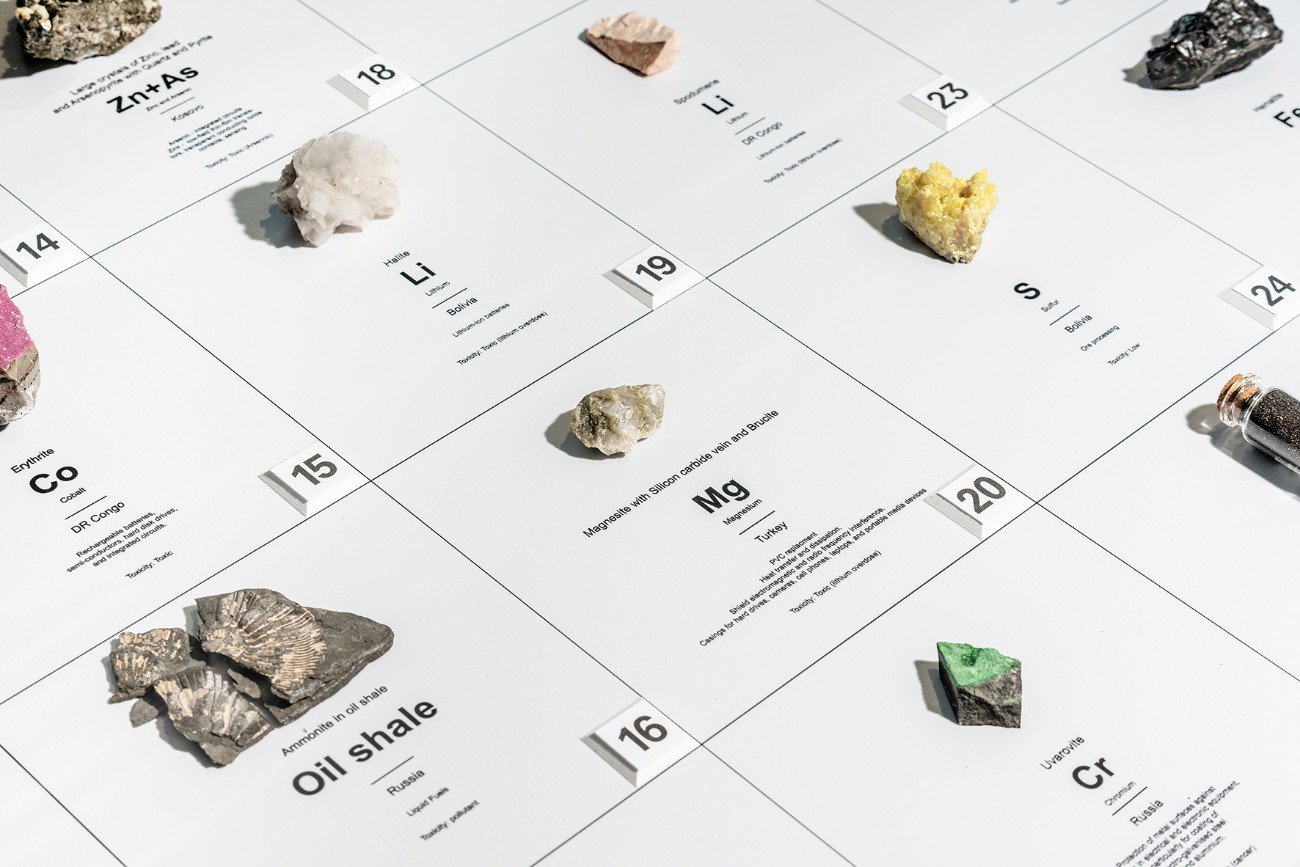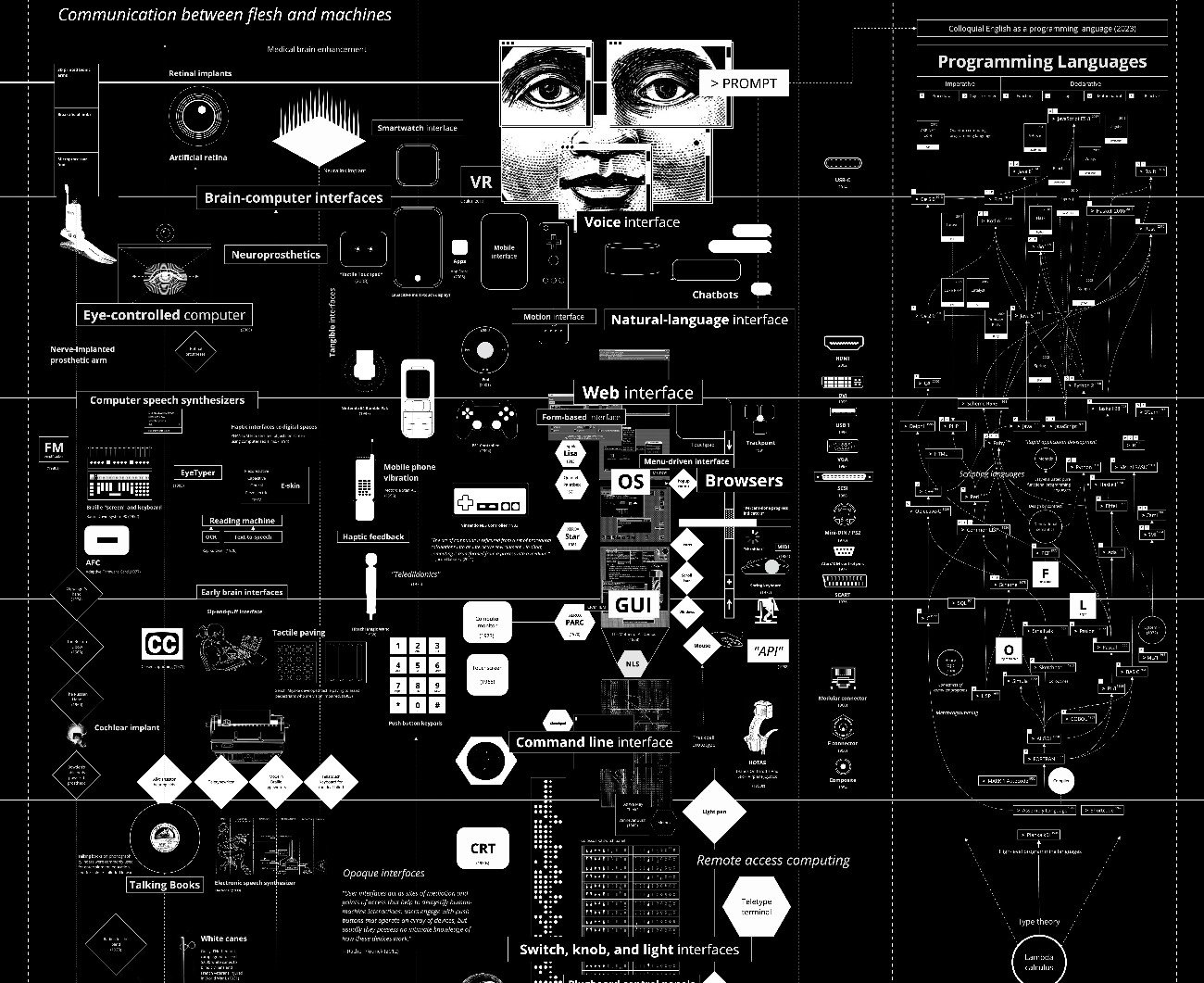Calculating Empires
In the surreal historical-modern space of the Observatory of Fondazione Prada, in the 19th c. Galleria Vittorio Emanuele II, in Milan, an exhibition invites us to look beyond our contingent conception and take stock of where we have gone so far and where we are going. Which fits with the place of an Observatory. The duo show, whose entire title is “Calculating Empires: A Genealogy of Technology and Power, 1500-2025” presents the current landscape of artificial intelligence by reconstructing the salient steps of how we have come, through the technology and power experienced over the centuries and since the 1500s, to here. A detailed journey that, when looked at from a general perspective that overlays all the particulars, helps us to better grasp the ensemble that emerges, its meaning: the implications of control and power that follow one another uninterruptedly, and still in place.
This show of vibrant critical and pedagogical power has its focal point in "Calculating Empires Map Room", a 24 mt large diptych of maps that glows in a darkened room. One map deals with issues of communication and computation, or the multiplicity of our communication devices, interfaces, infrastructures, data collection and use practices, computational architectures and hardware. Another map explores how these technologies are woven into social practices of classification and control, from prisons to surveillance to education, from colonialism to military systems. Both exhibited following an approach that favors complexity and a reading through the chronology of events, grouping different phenomena together in order to identify patterns that are repeated over the long term, and showing how echoes of the past are also found in today's technology companies.
Five hundred years of history from which we trace a leitmotif that we should be aware of. The starting point is the 1500s, which marked the beginning of two fundamental cultural, social and political processes: the development of Gutenberg's printing press and the new maritime and trade routes. The rendering of the project takes its cue, among other things, from Aby Warburg's 'Atlas,' a figurative atlas - an infographic - that, to trace evolutions of entire epochs, uses the primordial energetic evocative power of images alone.
To contextualize this new work, the visitor will first encounter Joler and Crawford’s “Anatomy of an AI System” (2018), an exploded view diagram focusing on the case study of the Amazon Echo voice-assisted AI. This anatomical map visualizes the three central extractive processes required to run any large-scale AI system: material resources, human labour, and data. It also shows their wasting: how each small moment of convenience – be it answering a question, turning on a light, or playing a song – requires a vast planetary network, fueled by the extraction (highly polluting itself) of non-renewable materials that required billions of years to be produced; labor, and data.
The magnitude of resources (obtained by overexploiting also human labor forces, both for extraction and transformation, the process of which creates innumerable and powerful surpluses of value and profits) required is many magnitudes greater than the energy and labor it would take for a human being to operate an electrical appliance or flip a switch. Moreover, the users that have purchased a consumer device like Amazon Echo et similia, he’s not just receiving a set of convenient affordances: they are also a resource, as their voice commands are collected, analyzed and retained for the purposes of building an ever-larger corpus of human voices and instructions.
Anything beyond the limited physical and digital interfaces of the device itself is outside of the user’s control. It presents a sleek surface with no ability to open it, repair it or change how it functions. The Echo is but an ‘ear’ in the home. Then, “when massive data sets are used to train AI systems”, the International Journal of Computer Vision 115 reports, “the individual images and videos involved are commonly tagged and labeled”. Driven by a remote, dispersed and poorly paid clickworker workforce that helps a client achieve their business objectives, contemporary forms of artificial intelligence are not so artificial after all. Every form of biodata – including forensic, biometric, sociometric, and psychometric – are being captured and logged into databases for AI training.
The exhibition also includes a work created by artist Simon Denny in 2019, inspired directly by Anatomy of an Ai System, which is titled “Document Relief 1, 3, 22 (Amazon Worker Cage patent)”, 2019-2020, is a reproduction of an Amazon patent of a cage designed to house workers inside logistics warehouses, and concludes with an eclectic collection of books, devices, and ephemera from 1500 to 2023 and a place dedicated to reflection. Imposing philosophical implications remain open.
If we were to look at all of this with a universal gaze, as if we were an external entity observing the world and its History, what implications, not moral but rather philosophical, would we give to this inherent instance in Man of moving more and more toward the storage of every individual data within a single source in the hands of a few human units? Do we conceive of it, in some way, as a grandiose, genius ability of the human being to overcome himself - to overcome all his other selves in an exceptional intellectual move - or as a sclero, a blind addiction, in the manner of the narcotic addiction, to power, and so instinctual and animalistic, or in what way?
“Calculating Empires: A Genealogy of Technology and Power, 1500-2025” by Kate Crawford and Vladan Joler, Novembre 23, 2023 – January 29, 2024, Osservatorio, Galleria Vittorio Emanuele II, Milan, Italy.
courtesy of FONDAZIONE PRADA
words LAVINIA PROTA
What to read next

























